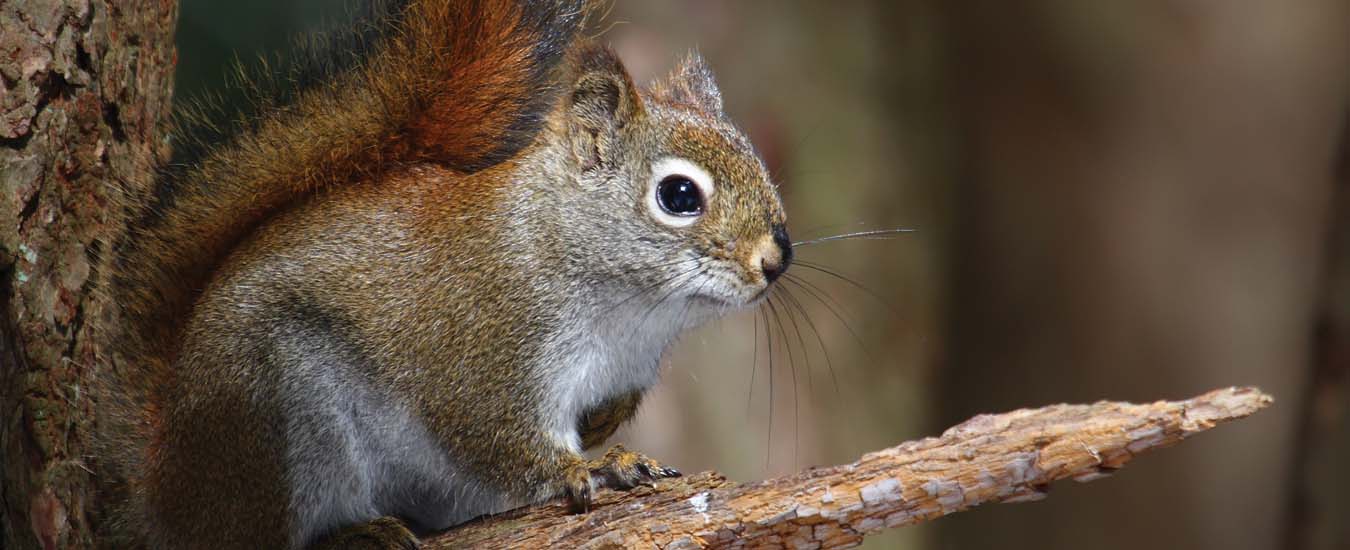Furry, friendly and cute? Or “long–tailed rats”?
I realized the backyard brouhaha had escalated into a full-fledged fight the day my mother called me and, without so much as a “Hello,” loudly declared, “I threw my shoe at him. That’ll show him.”
She was referring to the small red squirrel (Tamiasciurus hudsonicus) that calls her backyard his home. Along with his ever-growing family, he’s made his way into the garden, the garage, the shed, and at one point, even my father’s truck. He nibbles constantly at one of the two birdfeeders in the yard. That is, when he’s not perched on the deck taunting Monty, the resident poodle. (Monty has a four-word vocabulary: “sit, treat, walk,” and “squirrel.”)
My mother has tried a litany of new-fangled gadgets and old-fashioned advice to rid herself of what she calls the varmint. The shoe was a last resort.
Aside from flying footwear, there are a number of other things gardeners, cottage owners and householders can do to combat red squirrels, which are the most common type of squirrel in the region and the most common culprit in unwanted infestations. There are few guarantees, however.
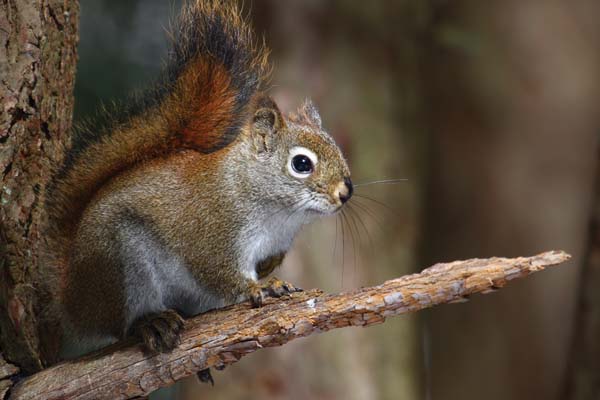
Squirrels can do damage outside to your property, but they do the most damage inside homes and cottages.
The solution depends on the problem
In the outdoors, squirrels like to make themselves at home at the birdfeeder and in the garden, which are treasure troves of food.
“Squirrels love flower bulbs. They leave them to deteriorate on top of the soil, sometimes partially eaten. Sometimes the bulb is whisked away to a hiding place to be retrieved and enjoyed at a later date,” says Stephen Harding, owner of Gardener on the Go in Timberlea, NS.
Squirrels are also partial to fruits and various plants, especially when they can’t find any of their favourite foods like nuts, says Bruce Dinger, author of The Definitive Guide to Controlling Squirrels. “More destructive is when they bury nuts and other food that they’ve gathered [elsewhere] in your garden or in your yard.
“Some squirrels also debark your trees,” he notes, “and they can chew through any plastic netting or screens that you have to protect your garden.”
Then there is the interior damage squirrels can cause. “Often, they find a way into cottages during the off-season or into homes to overwinter or nest,” notes Heidi Verheul, an environmental educator with the Sierra Club’s Atlantic chapter. “They can leave quite a mess of scat, urine and “middens” (old Scottish term for a waste dump) behind,” she says, adding that they will chew open bags of seed or shredding sleeping bags for fluff—in their efforts to access food or nesting materials.
It’s the latter issue that is the most serious, says Randall Dibblee, a retired wildlife biologist in Charlottetown. “When they get into people’s homes, that’s the biggest problem.”
Indeed, says Harding, once squirrels gain access to your house, they will begin a chewing frenzy that will know no bounds. “Insulation is a favourite, along with drywall, cardboard boxes—all the way up to electrical wire, which may pose a risk not only for the squirrel but also to the homeowner in terms of a possible fire hazard from exposed live wires.”
Keep them out
So what to do? First, and most obvious, try to keep the animals out of inside places. “Squirrels will generally invade an attic space via overhanging branches near a rooftop. Such branches should be trimmed back a sufficient distance from the house so as to not permit the little critter to make that leap into your home,” says Harding (and they are capable of some pretty spectacular leaps).
Property owners also need to fill in any gaps—literally. “They are small critters and can find their way into warm, sheltered spaces through cracks and crevices, so inspecting a home or cottage carefully to close up any obvious gaps and to screen in any flaps or ducts would be a first step to deter squirrels,” says Verheul.
“Having a cat can also give a squirrel a second thought about taking up residence in your home or cottage,” she adds. “A friend of mine borrows a friend’s cat when she goes to check on her cottage in hopes that the cat’s scent will help deter squirrels.”
Once a squirrel is inside, owners may need to take more drastic action. Says Dibblee: “Use a rat trap.” As harsh as this sounds, he notes, killing the squirrel is a better option than having it eat through your wiring and your walls with the inherent fire risk.
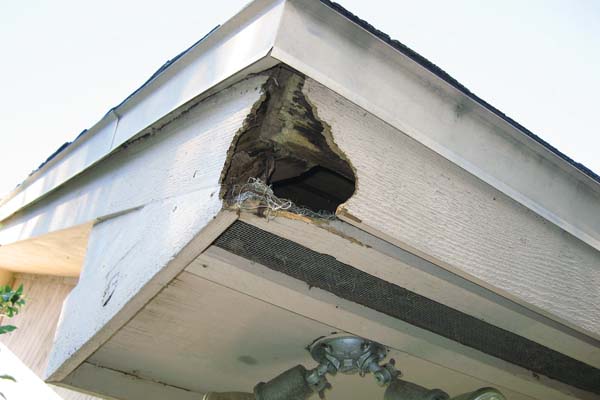
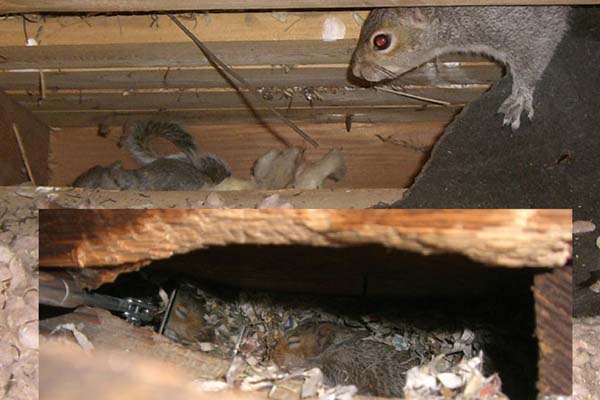
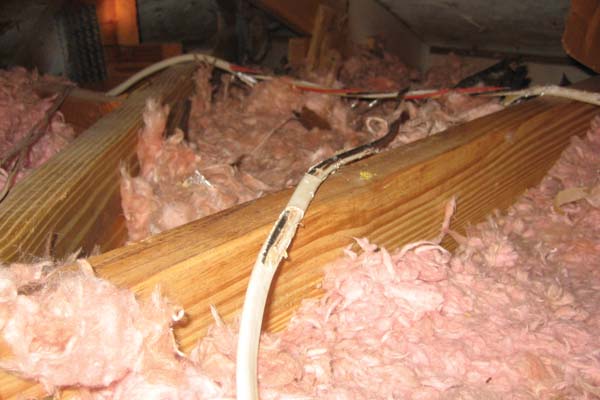
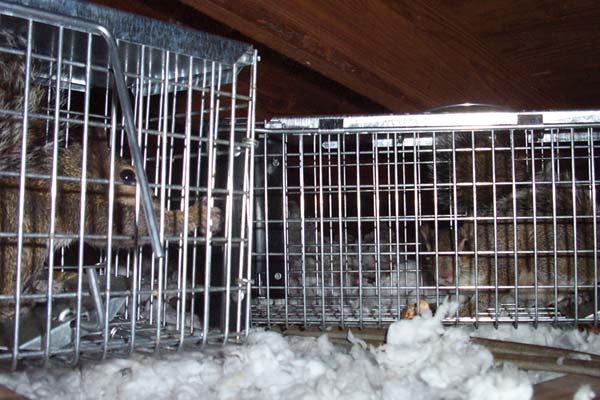
Fill any gaps to keep animals out in the first place. Once inside, squirrels may begin a chewing frenzy. “Insulation is a favourite, along with drywall, cardboard boxes—all the way up to electrical wire.”
Invest in deterrents
Outdoors, there are a number of choices that may convince the animals to go elsewhere.
“If you really want the birds and only the birds to get the benefits of your feeders, there are feeders available that react to the weight of a squirrel on the feeder by dropping a barrier that prevents the squirrel from accessing the seed,” notes Harding. “These feeders are more expensive, but generally they do the trick, although I don’t believe that you can fool all of the squirrels all of the time.”
Thick fencing and electronic fencing will also work, notes Dinger in his book. To battle the bulb problem, he recommends using wire mesh above and below the plant. “The idea is to keep squirrels from burrowing up or down and getting your bulbs. And the good thing is, your bulbs will grow unhindered as they grow up through the wire mesh fence,” he notes. Well-known remedies like putting oil or grease on a pole so the squirrel can’t climb to a birdfeeder may actually work as well, Dinger says.
A growing problem?
If it seems like skirmishes between squirrels and humans are escalating, two factors may be at play. One—there may actually be more squirrels in our backyards. “It does appear that the squirrel population is growing, but the appearance of so many squirrels in our residential areas may be due to man’s encroachment on the squirrels’ territory,” notes Harding. “Much the same as with raccoons, foxes, and porcupines: we think they are increasing in numbers, when the real reason we see so many is the result of an increase in the population and territory of humans.”
For squirrels, familiarity breeds complacency. “Like most wildlife species, they will habituate to humans, and red squirrels, by nature, are bold,” says Dibblee. “They’ll let you know if they’re threatened. They do chatter and chirp.”
They are also unfazed by shoes. Within minutes of my mother lobbing her shoe at her unwelcome guest, he was back—perched in the middle of the deck, sunflower seed in hand, nibbling away contently. My mother swears that, as she glared from the doorway, he winked.
Are the cute critters dangerous?
As squirrels become more comfortable with humans and their habits, they draw closer. Too close, however, may pose a health hazard.
First, squirrels have teeth and they know how to use them. “Squirrels can bite like all other wild animals,” says Dr. Jacqueline Badcock, a public health veterinarian with New Brunswick’s Department of Health. “The effects would be similar to other rodent bites and would depend on the severity of the bite. A major concern in all bite wounds is subsequent infection caused by many potential pathogens [including] bacteria and viruses.”
What is not a significant concern is rabies, says Tony Kiritsis, communications advisor with the Nova Scotia Department of Health and Wellness in Halifax. “While squirrels can and do bite, there is a low risk of rabies in rodents.”
Still, proceed with caution as any mammal can be affected by rabies, which is a potentially fatal viral infection.
In our region the most common strain of rabies is from bats, but there is always a small risk that it can be transferred to a land animal. You don’t have to get up close and personal with your furry friends to be at risk, however. They may leave a potentially unhealthy little heap behind. Feces of any kind poses a health hazard as it contains a large amount of potentially harmful bacteria and should always be dealt with caution. After working in the garden or tussling with the detritus a squirrel has left inside your cottage or attic, be sure to wash your hands thoroughly.
